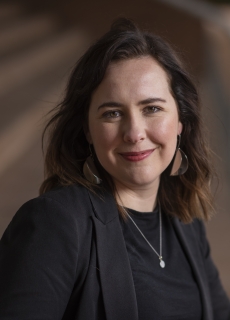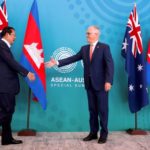Country, culture and nature-based climate solutions

Greater protection and restoration of Australia’s natural environment and cultural traditions are needed to meet our emissions reduction goals, a new report Nature as a climate solution has found.
Bringing together researchers from nine universities, with contributions from Traditional Owners, carbon and biodiversity trusts and conservation managers, the report offers strategies for reducing emissions through caring for nature, Country and culture.
UNSW Canberra researcher Dr Megan Evans says Australian government leadership is needed to drive strategic investment in nature-based emissions reduction solutions.
This includes halting the loss and degradation of existing biodiversity that results from weaknesses in current policy.
“Australia’s environmental laws and policies are piecemeal, often contradictory, and largely ineffective,” Dr Evans says.
“A core role of government is to lead and set the stage with institutions and public investment that protects what we have, but also encourages communities and the private sector to act and invest in nature.
“Government action must be commensurate with the scale of the biodiversity and climate challenges.”

UNSW Canberra researcher Dr Megan Evans.
The report’s findings show the urgent need for action to mitigate climate change and biodiversity loss, and the significant consequences facing all life on Earth in failing to do so, mirroring global assessments of the Intergovernmental Panels on Climate Change (IPCC) and Biodiversity and Ecosystem Services (IPBES).
Dr Rachel Morgain from the University of Melbourne says the planet has reached a critical turning point.
“On the upside, we know what to do,” Dr Morgain says.
“Nature and culture-based solutions are a win-win, delivering benefits for all our communities.
“They keep our air and waterways clean, renew our soils, provide food and pollination, keep us healthy and happy, and help mitigate the effects of extremes like droughts and floods, all while storing and sequestering carbon.”
UNSW PhD candidate and Secretariat Officer at the Global Ocean Accounts Partnership Jordan Gacutan says monitoring, reporting and valuation can be standardised across nature-based climate solutions through environmental-economic accounting.
“We need to account for nature in a systematic and coherent way to inform effective investment and decision making,” he says.
“For example, environmental-economic accounting lets us directly compare the outcomes of a project on kelp and seagrass in coastal NSW to those from a project on rainforests in Far North Queensland.”
The report states that greater investment and respect for Indigenous leadership in guiding, healing and restoration of Country is key to achieving emissions reduction.
In Iningai Country, custodians of the Iningai people are working to restore Country and reawaken culture by restoring artesian waterways, sacred rock holes and resuming cultural burning practices.
Suzanne Thompson, Iningai Traditional Owner and Yumbangku Aboriginal Cultural Heritage and Tourism Development Aboriginal Corporation spokesperson, says this work has helped restore their Country damaged through grazing and drought.
“Four days after one of the cultural waterholes was cleaned out, the rains came, which broke drought,” Ms Thompson says.
“There were waterfalls from the rain filling up these waterholes. A koala showed up in a tree the following morning.
“We call this Ngupitji Ngupitji: give to Country, and Country will give back.”
The report was commissioned by the Australian Conservation Foundation with support from the Ian Potter Foundation and Hermon Slade Foundation through the Conservation Futures project.
Read the report here.
Open Forum is a policy discussion website produced by Global Access Partners – Australia’s Institute for Active Policy. We welcome contributions and invite you to submit a blog to the editor and follow us on Twitter, Facebook, Linkedin and Mastadon.











